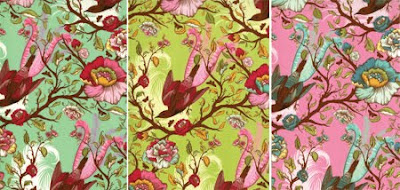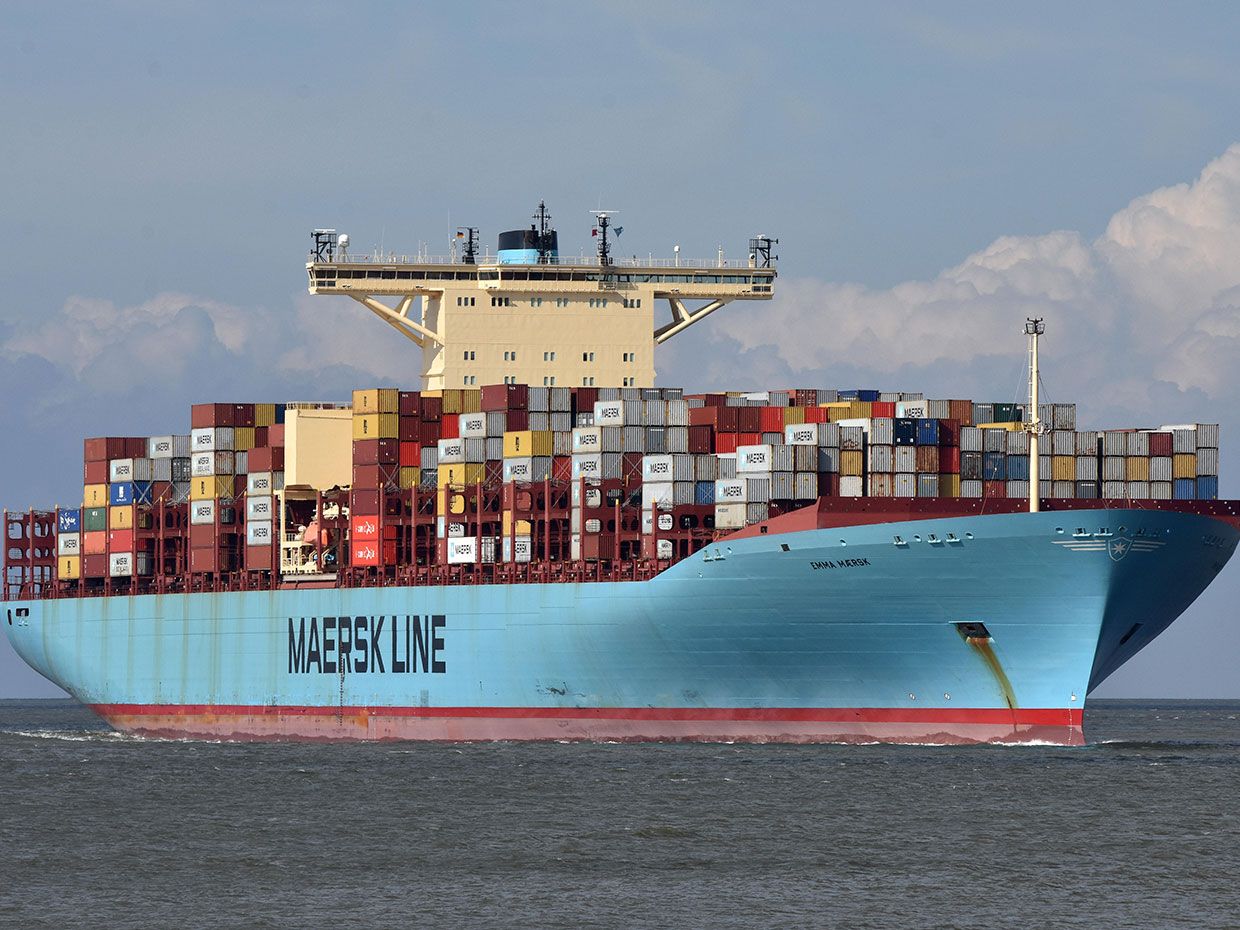Before the Fabric Hits the Shelves
Posted by April Hansen on
It's May! For those of us on the retailer side of things, that usually means going to what we call Quilt Market. Obviously, it's not happening this year. One of the highlights of Quilt Market is what they call "schoolhouses" where designers and manufacturers and other players in the industry help shop owners understand their thinking, be it behind a line or a new rotary cutter. I figured I'd turn things a little topsy turvy today with my own blog mini "schoolhouse" about what it takes for a fabric to end up in your mailbox. This is based largely on Tula Pink's process, with some information from FreeSpirit employees about other designer's processes. Some of the technical stuff comes from my own experience as a Graphic Designer and familiarity with the software. (Adobe Illustrator is also where all our website graphics come from, so...)
1. The designer begins with an idea.
Most designers start with paper and pencil sketches, some with paintings, and still others go straight to digital, using programs like Illustrator to make their ideas come to life. (This one is a De La Luna sketch! Ahh! Love it!!!)
2. The sketch/painting is converted to digital. This allows the artist to manipulate linework and colors.
Stage 1 of converting to digital:

Stage 2:

The brown shapes represent solid objects in Illustrator. These can then be moved, sized, and manipulated within the program.
Stage 3:

Color is added and manipulated until the artist is happy with the end result. As any designer (fabric or graphic designer) can tell you though, colors WILL look different on a screen than they do in person.
Stage 4:

Adding color families. Don't worry, we don't have to re-do all of the work again, Illustrator is pretty helpful for this type of thing. Colors are grouped together with their same color components in preparation for printing.
2. The Fabric is presented to the manufacturer
Manufacturers GENERALLY speaking release lines twice per year. Therefore, designers are on timelines to present new lines months and months in advance. Why?
3. Changes and Test Prints
Some fabric companies will immediately suggest changes or tweaks to prospective fabrics and colors, others will print small samples of many different colorways (more than the designer asked for/sent in) as a way to see if other combos might work better. The ideas are sent to a facility that will produce small pieces (like a fat quarter or less) of the design and return them to the company. From there, final decisions are made about the line and changes are made to color, size, and whatnot. Then, they send the adjusted files to the printer *again* to do another test print. There can be many rounds of this before a fabric is perfected. Trust me as a designer. MANY rounds of revisions. Finally though, files are finalized and sent to print at the manufacturer.
4. Printing at the Manufacturer
There's a first run with printing, kind of a test run for when all the bolts will be printed. They'll just make a little with the equipment, but make sure it's set up to go, and send some to designers to work with.
Although I am intimately familiar with many printing methods from my work and studies, I figured it'd just be better to show you this:
And yes, this is why local T-shirt companies charge by the color.
There are a few caveats to this video.
TWO steps they didn't *really* show that I'm going to share because gosh darnit I had to sit through a whole class and learn it:
The ink they're printing with- often blended from primary pigment colors (cyan, magenta, yellow, and black) by hand by a worker. There are some computerized processes, but many printers that still hand mix colors. I don't know which any of the major companies use in their factories.
Those screens- Those are individually carved (usually digitally from the file) for EACH color in a print. The circles/birds/bananas/skulls on the selvedge help workers (and computers that visualise this, in some printers) maintain registration. What is registration? If one of these plates is even the *slightest* bit off, you'll see it, I promise. Registration marks are put on documents to ensure the colors are where they're supposed to be. And if the registration is off.... you gotta start ALL over. Lots of screaming and cursing involved. I mean maybe not here, they're professionals. But me? Yes. The screens themselves? They're sometimes kept, sometimes destroyed. So reprint fabrics that come out years later are usually all new screens, as the originals aren't usually kept for super long.

In addition, some fabrics are specifically advertised as "digitally printed" and a lot of them look like color reached up and smacked you in the face. Those ARE digitally printed, just like it sounds, with a HUGE printer. Whole 'nother thing. This also includes services like Spoonflower, as it allows them to feasibly print small pieces of fabric. These fabrics are still relatively new and more expensive than traditionally printed fabrics. I don't really know why that is, them being more expensive. I guess fabric printer ink is like printer ink and more expensive than gold? Batiks are also a whole different thing, but I'll let you fall down that rabbit hole yourselves.
5. Showing it to Retailers
This is where quilt market comes in. An in-person funland of ALL the brands and fabric designers showing all their new, nifty stuff. Large, large, LARGE customers lookin' at you, fat quarter shop and missouri star are sometimes shown fabrics first, before market, by companies in order to gauge an initial response/desire for a line. The rest of us see it for the first time here, after which a company will have a much clearer idea of how popular the fabric will be and how much they should print. From there, companies know how much they can likely sell and will put in orders with the printer, and step 4 repeats in a much bigger way.
6. Shipping To the United States

This is it. The slow boat. This is the most glamorous photo of a cargo ship I could find, sorry. Yes, fabric goes on the slow boat. Why? Imagine the cost to ship in a faster way from Korea, where almost all quilting fabric is made, to the US! We'd be paying $50 a yard! Fabrics/ships must also go through and clear customs, which can also take time. Companies plan this transit time into their scheduling though, and are generally on time with their planning. Generally speaking. From here, it goes to the warehouse, where workers organize according to designer/line.
7. What Can Brown Do For You?
Okay so yes I'm a grown adult but I've never gotten over that UPS slogan. Not that all companies use UPS for final shipment to retailers, some have contracts with other large shippers like FedEx. I usually know which fabric arrives when I see what company's truck pulls up! For your viewing pleasure, here is the order we got 3(?) days ago. This is what 39 bolts look like. Also MAJOR shoutout to FreeSpirit for recycling boxes! I LOVE that!

8. Our Work Begins!
From those boxes, we get it into our respective stores/warehouses/studios to organize and sell. It might not magically sell itself! Social media, updating websites, and sending emails get people excited about it. Although, I mean, we made it stupid easy for ourselves by choosing to sell ONLY the BEST designers. But we do work, I promise! This blog post is like, the most words I've written since college!
9. Christmas Day!
Your package, with your fabric (and a few goodies) arrive at your doorstep after being cut and packaged by us, one fabric at a time. We're currently binging Marvelous Mrs. Maisel as we cut. I think our next series should be Upload. The package's safe arrival is thanks to my Epson EcoTank printer, ValueMailers shipping stuffs (if you like the cool envelopes that's where they come from) and the good 'ol USPS. (Which like, let's save them please?! Ain't nobody got time to be paying $50 to ship 4 yards of fabric!)
So, how long has this whole journey taken? About 18 months, or a YEAR AND A HALF. You know what they say, good things come to those who wait!
~Fin~
I hope you learned something in my "schoolhouse"! Tula's new True Colors and shipping in June and even newer Linework shipping in October up for preorder- WE CAN'T WAIT!!!- at a pay now/pay later 50/50 setup, with an additional mini charm pack bonus for preordering! This October line... I mean, Frog Prince is my ride-or-die favorite Tula Fabric... but this... this might give Frog Prince a run for its money.
Special thanks to Yards and Yards for their blog post, from which I got the images, and Tula Pink for making them available, and for sharing so much about her design process. Thanks also to FreeSpirit for their additional supplemental info, and everyone for being a life raft in this storm of life recently. Lastly, thanks to my graphic design professor, Professor Holliman, for teaching me about design, printing, and life in the job world after college.
I'm not crying, you're crying. Also will copy for my nobel prize speech.
Well, that's all I got! I think I made word count for an academic paper? I hope you learned something, and if not, hey! There's 20 minutes less of day to figure out what to do with! Bye for now!
Share this post
- 0 comment
- Tags: New Fabric Lines
